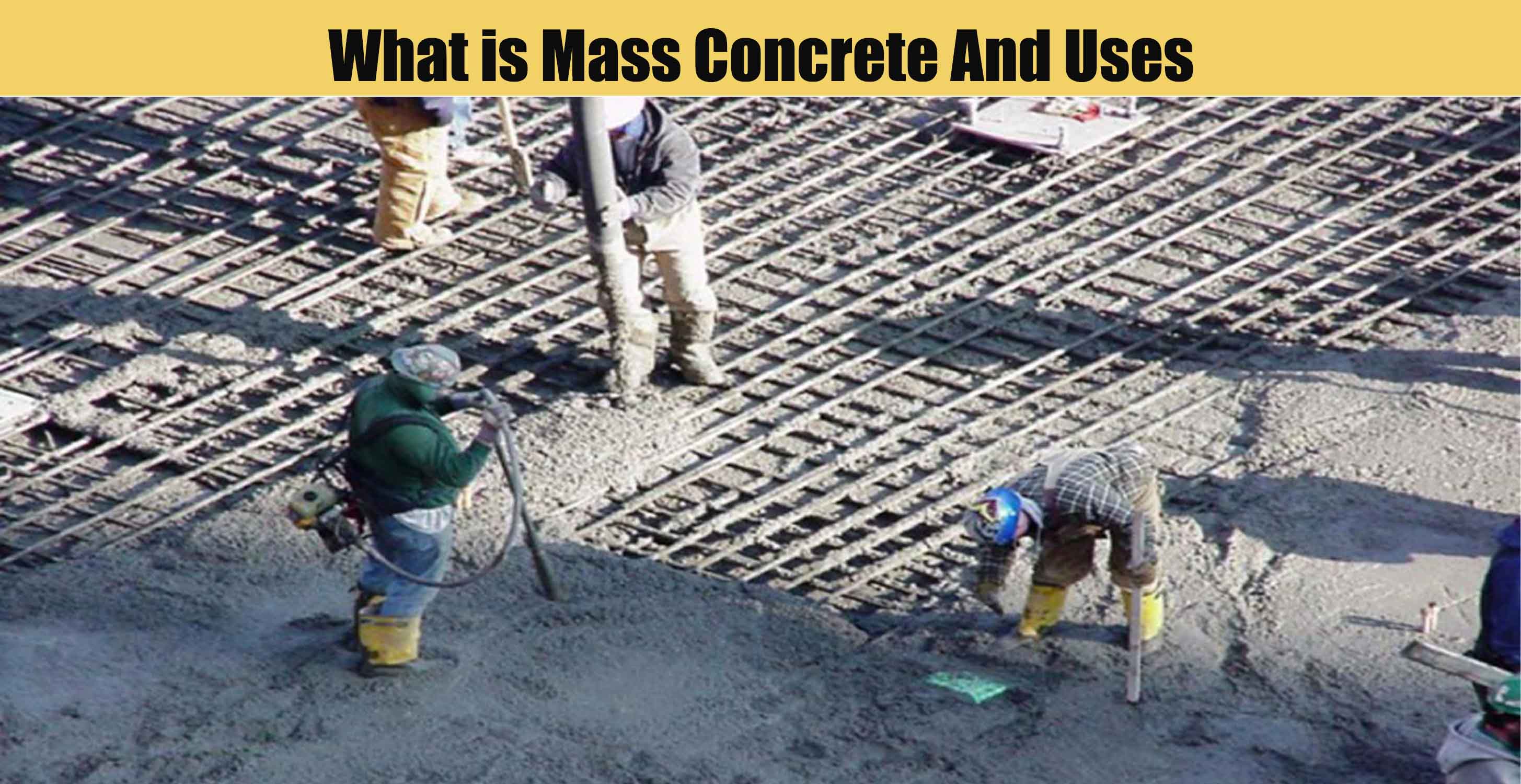Mass concrete is defined by American Concrete Institute Committee 207 as “any volume of concrete with dimensions large enough to require that measures be taken to cope with the generation of heat from the hydration of cement and attendant volume change to minimize cracking.
As the interior temperature of mass concrete rises due to the process of cement hydration, the outer concrete may be cooling and contracting. If the temperature differs too much within the structure, the material can crack.
The main factors influencing temperature variation in the mass concrete structure are:
1- The size of the structure
2- The ambient temperature
3- The initial temperature of the concrete at the time of placement and curing program
4- The cement type
5- The cement contents in the mix.
Mass concrete structures include massive mat foundations, dams, and other concrete structures with a width or depth exceeding three feet or one meter, (3 feet (1 m)).
Uses of Mass Concrete
Mass concrete is widely used for large construction purposes such as
1- Flyover
2- Bridges
3- Metro Railway
4- Dams
5- Reservoirs
6- Colors of high-rise buildings.
How to avoid thermal stress or cracks in mass concrete?
You just have read that, the temperature gradient between the inner core and outside surface is the major reason for the development of cracks.
You can use hot water during the curing of mass concrete. When using hot water at the surface of the mass concrete, there will be a small difference in temperature between the inner core and the outside only surface. This reduces the cracking of mass concrete.
Click Here To See Why We Can’t Use Sea Sand In Building Construction?

